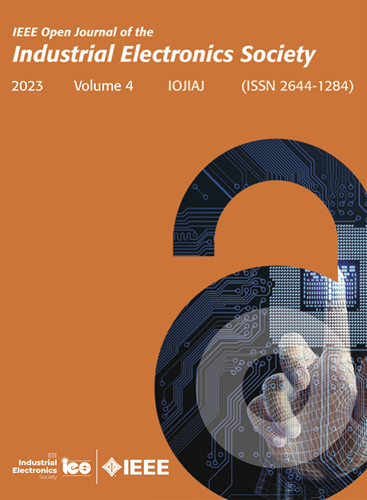A Multicriteria Constrained Tuning Method With Critical ZVS Operation for 6.78 MHz WPTS
IF 7.2
1区 工程技术
Q1 AUTOMATION & CONTROL SYSTEMS
引用次数: 0
Abstract
In general, the tuning of inductor–capacitor–capacitor-series (LCC-S) networks aims to obtain the load-independent output. However, the LCC-S networks require appropriate detuning to provide sufficient high-order harmonics for full-bridge inverters to achieve the critical zero-voltage switching (ZVS) operation at MHz scenario. Moreover, the effect of the parasitic resistance of the auxiliary inductor on the output characteristic and efficiency of LCC-S networks becomes more prominent as the switching frequency increases, introducing a new challenge to the parameter design. In this article, a multicriteria constrained tuning method with critical ZVS operation is proposed for LCC-S type full-bridge 6.78-MHz wireless power transfer systems (WPTS). Based on the time and frequency analysis, the proposed method obtains the ZVS regions over the whole load range. Furthermore, the system achieves the optimal efficiency under the target case with the critical ZVS operation. A 65-W full-bridge 6.78-MHz WPTS is built to verify the accuracy and coherence of the proposed tuning method. The system can achieve an efficiency of 88.51% and 88.29% with an output power of 77.14 W and 62.52 W, respectively. Compared with the control parameters, the power loss of the proposed parameter over the whole load range has been reduced by 15.7%.6.78 MHz WPTS的临界ZVS多准则约束调谐方法
一般来说,电感-电容-电容串联(lc -s)网络的调谐目标是获得与负载无关的输出。然而,lc - s网络需要适当的失谐,为全桥逆变器提供足够的高次谐波,以实现MHz场景下的临界零电压开关(ZVS)操作。此外,随着开关频率的增加,辅助电感的寄生电阻对lc - s网络输出特性和效率的影响也越来越突出,给参数设计带来了新的挑战。针对LCC-S型全桥6.78 mhz无线电力传输系统(WPTS),提出了一种具有临界ZVS操作的多准则约束调谐方法。该方法基于时间和频率分析,得到了整个负载范围内的ZVS区域。在目标工况下,系统在临界ZVS工况下实现了最优效率。搭建了一个65w全桥6.78 mhz WPTS来验证所提调谐方法的准确性和相干性。系统在输出功率分别为77.14 W和62.52 W时,效率可达88.51%和88.29%。与控制参数相比,该参数在整个负载范围内的功率损耗降低了15.7%。
本文章由计算机程序翻译,如有差异,请以英文原文为准。
求助全文
约1分钟内获得全文
求助全文
来源期刊

IEEE Transactions on Industrial Electronics
工程技术-工程:电子与电气
CiteScore
16.80
自引率
9.10%
发文量
1396
审稿时长
6.3 months
期刊介绍:
Journal Name: IEEE Transactions on Industrial Electronics
Publication Frequency: Monthly
Scope:
The scope of IEEE Transactions on Industrial Electronics encompasses the following areas:
Applications of electronics, controls, and communications in industrial and manufacturing systems and processes.
Power electronics and drive control techniques.
System control and signal processing.
Fault detection and diagnosis.
Power systems.
Instrumentation, measurement, and testing.
Modeling and simulation.
Motion control.
Robotics.
Sensors and actuators.
Implementation of neural networks, fuzzy logic, and artificial intelligence in industrial systems.
Factory automation.
Communication and computer networks.
 求助内容:
求助内容: 应助结果提醒方式:
应助结果提醒方式:


